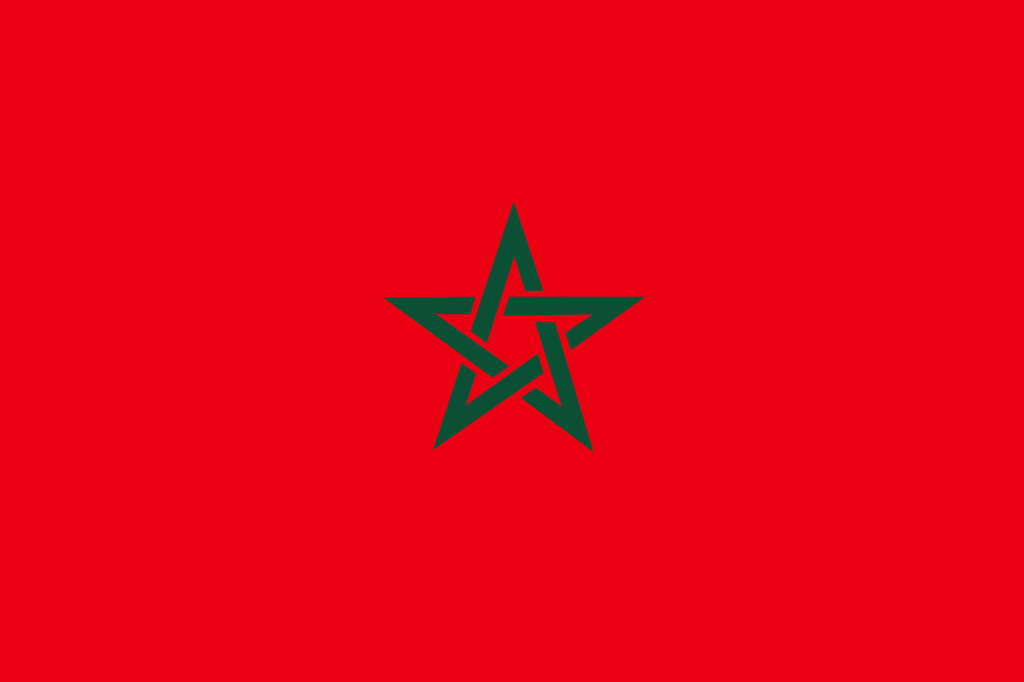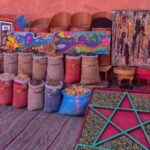Morocco History
History of Morocco – A Detailed Guide
History of Morocco – A Detailed Guide
Morocco history is distinct from that of many other countries. For ages, Morocco has served as a meeting place for Arabic Islamic culture and civilization, and it is a region of tolerance, discussion, and generosity.
In 1956, Morocco won its independence. Agriculture, aircraft, tourism, automotive, phosphates, textiles, garments, and subcomponents are the key contributors to its economy.
With the emergence of Islam, Morocco emerged as an independent state capable of repelling great invaders. Morocco has traditionally been a shining example of cultural cohabitation and interaction among Muslims, Christians, and Jews.
Morocco’s rich historical history has influenced modern society. Moroccan foods, dialects, art, and landmarks are a synthesis of the numerous religions and nationalities that have left their imprint on Moroccan culture.
History Flag of Morocco
Morocco obtained independence from France in 1956, and the country’s national flag, a green pentagram on a crimson field, was kept. Morocco’s flag is used by the Moroccan government and has been the country’s flag since November 17, 1915.

The flag is red with a green star in the middle. In the Moroccan flag, the crimson background hue indicates the connection between GOD and Nation, and the red color denotes Courage, Unity, and Bravery.
The green star on Morocco’s flag signifies the five pillars of Islam. Certificate or testimony, prayer, alms, fasting, and pilgrimage are all represented by 5-star peaks.
The green tint in the pentagram represents a salmon seal, indicating the nation’s link to Islamic culture.
Jewish morocco history
For thousands of years, the existence of Jews in Morocco has been linked to historical movements in the Mediterranean basin. The entrance of Muslims in Morocco did not impede the Jewish migration to Morocco.
Moroccan Jews are a well-established group. Morocco’s Jewish community grew in strength with the entrance of Mogorashim. That was the finest age of Moroccan history, when Jews and Muslims coexisted together.
Prior to the establishment of the State of Israel in 1948, there were around 250,000 to 350,000 Jews in the nation, making Morocco the biggest Jewish population in the Muslim world, but by 2017, just about 2,000 remained.
In order to undercut Moroccan national unity, French and Spanish authorities encouraged tensions between Jews and the Muslim minority, which aided French and Spanish colonialism.
Colonial History Morocco
The majority of the nation was under French colonial power, while Spain took control of Morocco’s northern area.
The inflow of millions of Europeans, who were educated and advanced in transportation and health care, aided French and Spanish colonization. They grabbed control of Morocco’s key organizations.
Abd-El-Krim, a political party, was staunchly opposed to foreign authority. Some groups of young educated Moroccans desired political rights and perhaps independence, adding to the impetus for change.
10 Top Facts about Morocco
There are several fascinating facts about Morocco and its history.
-Morocco has a blue city known as the Blue Pearl of Morocco.
-Morocco has a crimson city as well. Marrakech is known as the “red city.”
-Morocco was the first country to recognize the United States as a sovereign nation-state.
-The majority of Moroccans are Muslims.
-Morocco boasts seven wine areas, but alcohol is difficult to come by.
-Morocco’s national tea is mint tea.
-In Morocco, the left hand is considered filthy, and it is forbidden to eat with it at any time. The left hand is allocated for unsanitary tasks.
-Morocco has an overabundance of cats.
-Morocco’s flag has religious symbols.
-Morocco’s tourism business is massive.
Why was Morocco Colonized?
Unlike the neighboring colony of Algeria, the French Protectorate of Morocco intended to assist sustain and renovate the monarchy and its official institutions, known collectively as the machine or “storehouse.”
Following WWII, France and Spain took advantage of the Moroccan problem’s globalization to permanently occupy the ground. The fruit sheriff is ripe and ready to fall at any time in the late nineteenth century.
The sultans (Moroccan rulers) had amassed enough debt with European banks to pay for lost war tribute, compensate for the drying up of the financial bonanza, and sustain their opulent lifestyle.
The Moroccan administration was sealed due to economic insolvency.
Morocco's History: Frequently Asked Questions
What is the origin of Morocco?
Morocco is derived from the term Marrakesh. Morocco was widely known as the Kingdom of Marrakesh under the three kingdoms that made Marrakesh their capital.
It was known as the Kingdom of Fes during the time, after the dynasties that had Fez as their capital.
Why did Spain take over Morocco?
It was considered that in order for Spain to retain its dignity in front of Europe, it was necessary to annex and seize control of Morocco. Furthermore, Spain took over Morocco for power and to make their population proud of their country.
Conclusio
In this page, we quickly summarize morocco history and notable features, as well as shed light on the colonization of Spain and France in Morocco. Morocco’s rich historical history has influenced current society.
Moroccan art, food, dialects, and landmarks are a synthesis of the numerous religions and nations that have left their imprint on Moroccan culture.
Morocco has traditionally been a shining example of cultural cohabitation and interaction among Christians, Muslims, and Jews. Contact us if you want to visit this magnificent nation rich in cultures and customs.




